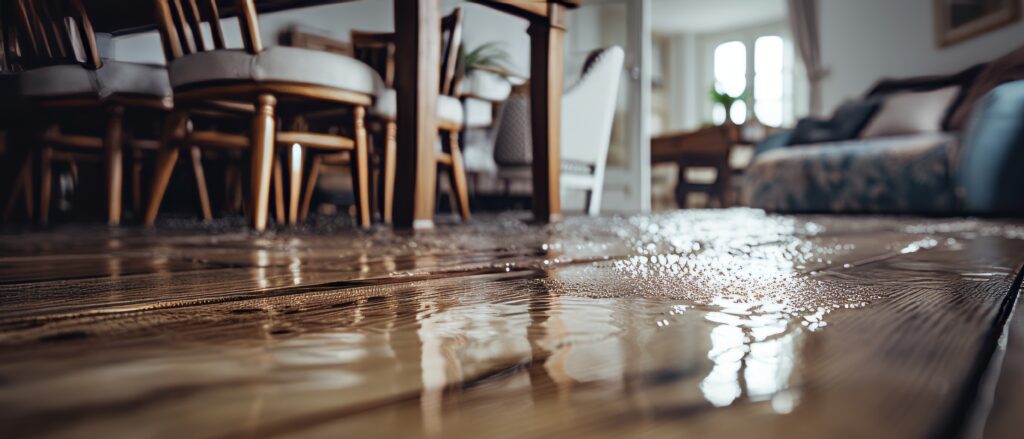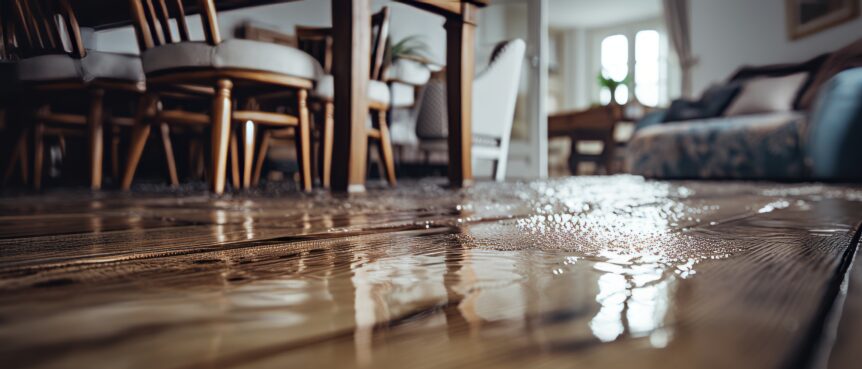Water damage can wreak havoc on your home, leading to costly repairs and stress. Understanding the different types of water damage and how insurance covers each can help you better prepare for unexpected events. Let’s explore the various categories of water damage and the insurance options available to protect your home… Check out our guide below.
Questions? Reach out to one of our knowledgeable agents. We’re eager to set you up with the right coverage and rate!

Types of Water Damage
a. Clean Water Damage
This type of damage is caused by clean water sources, such as broken pipes, overflowing sinks, or rainwater. Clean water damage is typically the least harmful and can often be addressed quickly. However, if not dealt with promptly, it can lead to mold growth and other issues.
b. Gray Water Damage
Gray water damage comes from sources that may contain some contaminants, such as dishwashers, washing machines, or toilet overflows (without feces). While it’s not considered black water, it can still pose health risks if not treated properly. Gray water damage requires more extensive cleaning and sanitization.
c. Black Water Damage
Black water damage is the most severe and dangerous type, originating from sources like sewage backups, flooding from rivers, or standing water. This water contains harmful bacteria, chemicals, and other pathogens, making it a serious health risk. Cleanup and restoration for black water damage require professional help to ensure safety.
Insurance Coverage Options
a. Homeowners Insurance
Most standard homeowners’ insurance policies cover water damage from sudden and accidental events, such as burst pipes or heavy rainfall that overwhelms drainage systems. However, coverage typically excludes damages from flooding or lack of maintenance. It’s essential to review your policy to understand the specifics of your coverage.
b. Flood Insurance:
Homeowners’ insurance does not cover flood damage, which is why flood insurance is essential for homeowners in flood-prone areas. This specialized policy provides coverage for damage caused by rising water from lakes, rivers, or heavy rains. The National Flood Insurance Program (NFIP) offers federally backed flood insurance policies, which are a must-have for those in high-risk zones.
Note: The National Flood Insurance Program (NFIP), administered by FEMA, provides flood insurance to property owners, renters, and businesses in participating communities. It helps reduce the financial impact of flooding by offering affordable coverage and promoting floodplain management practices to mitigate flood risks.
c. Sewer Backup Insurance
Sewer backup insurance is an additional policy option that covers damages caused by sewage backups. While some homeowner’s insurance policies may offer limited coverage for sewer backups, adding this endorsement provides broader protection. This is especially important for homes in areas with older sewer systems or frequent heavy rains.
d. Water Backup Coverage
Similar to sewer backup insurance, water backup coverage specifically protects against damages resulting from water backing up through drains or sump pumps. This coverage is often an add-on to your homeowner’s policy and is critical for homes prone to flooding or where sum pumps are frequently used.
e. Personal Property Coverage
Most homeowners’ insurance policies include personal property coverage, which can help reimburse you for damaged items due to water incidents. However, the specific coverage limits and exclusions may vary, so it’s essential to assess your policy to ensure adequate protection for valuable belongings.
f. Limited Water Damage Coverage
Limited water damage coverage typically applies to specific types of water-related incidents, such as sudden or accidental leaks from plumbing systems. It does not cover flooding, overflow from drains, or damage caused by standing water. Homeowners may need additional coverage for these scenarios through flood insurance or specific endorsements to their policies.
g. Hidden Leakage Coverage
Hidden leakage coverage is designed to address water damage that occurs from leaks within walls, floors, or ceilings that are not immediately visible. Standard homeowner’s insurance policies may not cover this type of damage unless it is accidental and sudden. It’s important to check your policy to see if hidden leaks are included or if you need to add extra coverage to protect against this hidden risk.
Preventative Measures
While insurance can help mitigate the financial impact of water damage, taking preventative measures can reduce the likelihood of incidents occurring. Here are a few tips:
Regular Maintenance: Inspect and maintain plumbing systems, roofs, and gutters to prevent leaks.
Sump Pumps: Install a sump pump in basements to manage excess water.
Water Alarms: Consider using water alarms that alert you to leaks or flooding early.
Sealant: Use waterproof sealants in vulnerable areas, such as basements and around windows.
Understanding the different types of water damage and your insurance coverage options is crucial for protecting your home. By being informed about clean, gray, and black water damage, along with the relevant insurance policies, you can better prepare for unexpected water-related incidents.
If you have questions about your current coverage or want to explore options for flood or backup insurance, reach out to your insurance agent. Being proactive about water damage can save you time, stress, and money in the long run!
This article is for informational purposes only. You should not act based on this information without first consulting with your insurance agent; if you would like a quote from a Cornerstone Insurance Agency licensed agent, contact us. We disclaim all liability for actions taken or not taken by you based on the contents of this article which is provided “as is.” Cornerstone makes no representation that this content is error-free.

